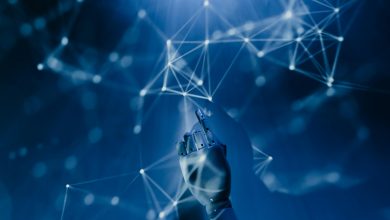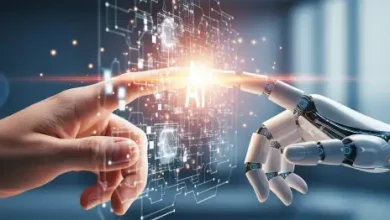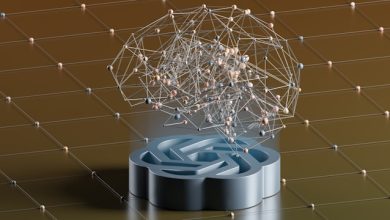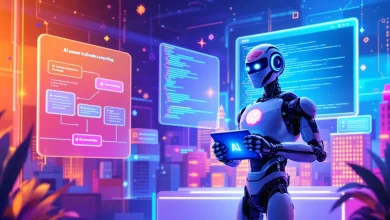Many organisations are racing to embrace AI solutions to boost productivity and performance. Whether it’s deploying AI agents in call centres to provide 24/7 customer support at a fraction of the cost, or using AI to make sales calls and drive revenue, workplaces are changing at a pace we’ve never seen before.
According to the AI Index Report produced earlier this year by the Stanford Institute for Human-Centred AI (HAI), “Generative AI saw particularly strong momentum, attracting $33.9 billion globally in private investment – an 18.7% increase from 2023”. The report also notes that “AI business adoption is accelerating: 78% of organisations reported using AI in 2024, up from 55% the year before”. These statistics make it clear: AI is no longer a distant possibility but an everyday workplace reality – reshaping jobs, processes, and the way organisations operate.
But with AI adoption surging, important questions remain: what impact will this have on our ability to stay human? What might this mean for our wellbeing, creativity, and connection with one another?
The Pace of Change
AI has dramatically shortened the gap between data collection and decision-making. Take employee engagement surveys. Not long ago, they were annual exercises, with insights reaching leaders months after the survey closed – often too late to feel relevant. Today, AI-powered platforms deliver real-time insights and continuous feedback. Leaders now face an overwhelming stream of data, highlighting problems and prescribing solutions almost instantly. On the surface, this sounds like progress, however, there will always be a lag between insights and action. Previous inaction wasn’t often about not knowing the issues – it was about the discomfort of addressing them in complex environments. Now, AI is removing the excuse of ignorance, and with that comes growing pressure for constant change.
Instead of making work easier, AI risks fuelling an endless cycle of reaction. With more data comes more insight, which creates more pressure for rapid action. Organisations may begin to resemble biological systems, always monitoring, always adjusting.
There is an added issue – in uncertain times, predicting the future by analysing past data can be misleading. The danger? Humans end up reacting faster but thinking less, with little space for the problem-solving and reflection that lead to real breakthroughs.
Innovation and Creativity
When AI tools are used to “give us the answer,” they risk dulling our critical thinking. Researchers at MIT, recently found that ChatGPT users “consistently underperformed at neural, linguistic, and behavioural levels,” showing lower brain engagement compared to those who solved problems without it.
True innovation rarely emerges from efficiency alone. It comes from the messy, unpredictable process of curiosity, questioning, and even failure. Albert Einstein’s theories of relativity and quantum mechanics were born out of thought experiments – moments of imaginative reflection, not algorithmic optimisation. If AI accelerates the pace of work to the point where humans no longer have the time to pause, ponder, or explore, our capacity for creativity will diminish. Innovation requires space. It requires time. And that is something only humans can demand for themselves.
A recent article in the HBR highlighted how AI can increase our productivity. But it also found that when the 3,500 participants then shifted to tasks which didn’t involve the use of AI, intrinsic motivation fell, and boredom followed. This was in stark contrast to those who hadn’t worked with AI at all, who maintained a stable psychological state. When relegating problem-solving challenges and the creative thinking to AI, it seemed we found it much harder to think for ourselves, when dealing with tasks which didn’t involve AI assistance, leading to a lack of motivation and purpose. Could the overuse of AI then have longer term consequences on our ability to enjoy our work?
Empathy and Trust
Perhaps the most profound difference between humans and AI, lies in our capacity for empathy. We feel because we have lived. AI can mimic empathy with carefully chosen words, but it cannot truly understand the experience of grief, joy, disappointment, or hope.
Trust – the foundation of collaboration and psychological safety – depends on this very human ability to connect. Yet, increasingly, people are turning to AI for support not because it understands them, but because their fellow humans don’t make the time to listen.
If we allow AI to replace rather than support human connection, we risk losing what makes workplaces communities, rather than just systems of production. To remain human is to connect, to listen, to care. AI should be the tool that gives us the time to do this – not the substitute for it.
Staying Human in an AI World
AI is here to stay. It will improve efficiency, reduce costs, and open possibilities we cannot yet imagine. But its true purpose should be to free humans – free us to think, to imagine, to solve complex problems, and to build meaningful relationships.
Staying human in an AI-powered workplace means remembering that productivity isn’t the end goal – people are. Our wellbeing, creativity, and empathy must not be sidelined in the pursuit of speed and efficiency. If we lose the time to pause, to reflect, and to connect, we risk building workplaces that are efficient but inhuman.
A Final Reflection
AI will undoubtedly shape the future of work, but how we shape ourselves within it is still a choice. Remaining human is not about resisting technology, but about insisting on the values that technology cannot replicate – empathy, trust, creativity, and care.
The challenge for leaders is clear: use AI not to replace what makes us human, but to create the time and space for humanity to thrive at work. Because in the end, it won’t be AI that defines the future of workplaces – it will be the humans who decide how to use it.





